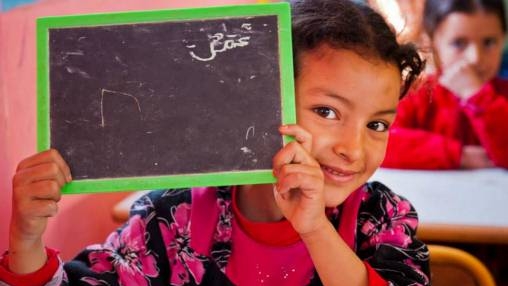The education system in Morocco has achieved important progress in terms of increasing access to education but has still a long way to go on quality.
As the country grew economically in recent years, it became increasingly clear that the education system had a role to play as a true catalyst for social and economic development. Reaching out to the most marginalized populations in pursuit of this goal has led to significant increases in access to education.
Progress has been achieved on a number of other fronts through multiple and sustained efforts. While results are closely tied to means and resources, they also depend heavily on the continuity and consistency of education strategies backed by successive governments, with civil society and parents monitoring and evaluating public policies in the education sector.
A decade of effort
Morocco’s education system has faced a number of acute problems. They were mainly linked to insufficient coverage, gender disparity at all levels, and high dropout and repetition rates. The cumulative effect was poor, learning outcomes and a weak integration of graduates in the labor market; all leading to a lack of confidence in the public education system.
To overcome these challenges, the Government embarked on a comprehensive reform program, with the adoption of the National Education and Training Charter in 1999. The Charter declared the 2000 to2009 decade, the “decade for education” and established education and training as a national priority. However, as the reform program encountered delays, an Education Emergency Plan was drawn up in 2009 to boost the reform process.
Establishing equity in education, by ensuring the entire population has access, is the first step in enhancing the performance of the education system. Investments made over the past decade in school infrastructure along with support to the poorest students contributed to increases in national enrollment rates from 52.4 percent to 98.2 percent in primary education, from 17.5 percent to 56.7 percent in lower secondary education and from 6.1 percent to 32.4 percent in upper secondary education. There has also been clear progress toward equity, with the gap between urban boys and rural girls at the primary education level narrowing to just 3.5 percentage points by the 2012 school year.
However, significant gaps remain between rural and urban students and between female and male students beyond the primary level. In lower secondary education, for instance, the net enrollment rate is 79 percent for boys in urban areas but only 26 percent for girls in rural areas. This gender gap is indicative of the social and cultural norms that continue to place rural girls in particular at a disadvantage.
More work to be done on quality
Beyond access, the cross-cutting foundation of a school system is the quality of teaching and learning. Morocco has made considerable efforts to enhance education quality over the years, particularly by upgrading teaching curriculums and implementing regional training centers for teachers.
However, the level of education quality remains low despite these reforms. The 2011 editions of the international Trends in Mathematics and Science Study (TIMSS) and the Progress in International Reading Literacy Study (PIRLS) showed low learning achievement scores for Moroccan Grade 4 and Grade 8 students compared to those from other participating countries.In Grade 4 mathematics, for example, 74 percent of Moroccan students did not reach even the lowest of four benchmark levels, while none at all reached the highest benchmark level.
The reform momentum should therefore be maintained to build on the achievements of the past decades. More efforts are needed to modernize syllabuses and harmonize teaching languages throughout the curriculum. This will improve teaching practices and, avoid inconsistency and waste of resources. Equally important is the relevance of syllabuses and vocational training to the demands of the labor market. A growing number of trained and qualified youth struggle to find openings in a demanding job market and find little support or guidance from the education system in acquiring the skills for the most sought after professional profiles.

